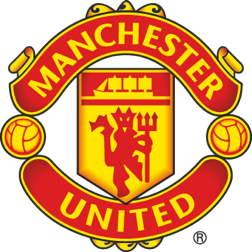Lifeblood: What was MUJAC?
In the first film of our new Lifeblood series, the spirit and essence of Manchester United’s world-famous Academy is traced back to the innovative 1930s. Youth development starts in earnest with the foundation of the MUJAC. But what is that, why did it begin and what impact did it really have?
Lifeblood utilises behind-the-scenes access to explore what drives the achievements and the philosophy of youth development at the club. In later episodes, viewers will see how the Academy operates on a day-to-day basis and how decisions are taken to help talented young players like Marcus Rashford, Scott McTominay, Kobbie Mainoo and Alejandro Garnacho thrive and carve out a future in the game for themselves.
The first film, however, is about the feel of the place and what has driven a desire to develop our own for nearly a century now, and while the first seeds of youth were sown with the creation of the ‘A’ Team (essentially the Under-18s) in 1932, it was the creation of MUJAC which heralded the start of an Academy proper at United.
‘Lifeblood’ series trailer
Here’s what you can expect from ‘Lifeblood’, MUTV's Academy documentary series. Watch the full films now...
WHAT WAS MUJAC?
“MUJAC! May I add a note about this mystic word,” United Review editor Sidney Wicks helpfully noted in 1938. “It stands for Manchester United Junior Athletic Club.”
This was effectively the start of our world-famous Academy. It welcomed in boys aged 15 and 16 to receive quality coaching, play together and, should all go well, progress into United’s ‘A’ Team, Reserves and eventually the first-team.
It was a brave and innovative idea. Split into two teams, the MUJACs competed not against players of their own age, but in open-age leagues against adults. This would accelerate their development and best prepare them for the men’s game.
WHY WAS MUJAC FOUNDED?
Youth became an immediate priority when wealthy uniform manufacturer James W. Gibson became United’s club president in January 1932. The ‘A’ Team was the first step, acting as a ‘nursery’ for good talents in the local area. It was a success, with several players graduating into United’s senior side, but it was a singular youth team rather than an Academy.
In 1938, with club finances stabilised and all eyes set on the long-term future, a new scheme was begun, urged on by Gibson and led by secretary (and interim manager) Walter Crickmer.
“Within a seven mile radius of United ground there are over 250 schoolboy soccer teams with upwards of 3,000 players,” United Review explained at the time.
“These mostly owe their life to the enthusiasm of school-teachers. In order that promising players might not be wasted MUJAC scheme was placed under the patronage of Manchester United Directors with a committee composed of teachers and other experienced friends. The Club nights definitely encourage the lads to do well in their everyday occupations as well as in football. It is a splendid experiment.”
The idea was born out of two principles: the need to be prudent and save money for an often-times cash-strapped club, and a more philosophical desire to see, in the words of president Gibson, “a Manchester United composed of Manchester players.” Gibson was a proud Salfordian and Mancunian (he lived in both cities throughout his life) who wanted United to represent Manchester positively to the world.
HOW DID MUJAC START?
After trials at the newly-purchased Cliff training ground in the summer of 1938, 30 boys from Manchester and Salford were selected to be a part of two teams: MUJAC A and MUJAC B.
The Gibson-urged, Crickmer-led scheme effectively formalised what chief scout and all-round fixer Louis Rocca, who joined Newton Heath as a teaboy in the 1890s, had utilised for some time: recommendations from a network of teachers, priests, lads’ club leaders and anyone else. Walter and Louis sounded out local school teachers to help them with the initiative. A 30-year-old United-supporting man called John Bill led a committee of teachers, who worked with Crickmer, Rocca, scouts Jimmy Porter and Ted Connor, trainer Tom Curry, coach Jim McClelland and various others to begin the teams.
MUJAC A won their debut game 7-0 and it was no first-day anomaly. The lads involved were very much ‘the cock of the north’, winning all of their first 19 games and scoring a remarkable 142 goals as they romped through south Manchester without a care in the world.
At the end of the first season, with the MUJACs winning the league after only one defeat, the young Reds were pitted against one of the few other clubs in the country to be chasing this pioneering dream: Everton.
The Toffees’ ‘B’ team featured players mainly aged 15 and 16, like MUJAC, but unlike United’s, they competed not in a division with players their own age. With each having notched astonishing results all season, it was only right they face off, and they did so first at Old Trafford — where United won — and then at Goodison Park, with Everton the victors.
WHAT IMPACT DID MUJAC HAVE?
Its impact endures today. While youth development had already begun earlier in the decade, MUJAC was certainly the start of the Academy as we know it today. It focused on training up talented young players before or just after they had left school. This was a change to the norm in English football.
Furthermore, the philosophy of MUJAC was about creating an environment for children to learn and thrive. Club President James Gibson insisted that the boys involved would have no obgliation to choose Manchester United's first team should they become good enough for Division One football, he just hoped they would 'consider' it, the idea being they would enjoy their time with MUJAC sufficiently to be desperate to represent United for the rest of their careers. While the specifics have clearly changed, the same desire to create a positive environment has grown ever stronger since.
On a more short-term level, MUJAC was disrupted by the outbreak of war in September 1939, preventing a second season of seamless success. While the outbreak of World War Two was a shattering blow to all of English football, it certainly appeared that fate had treated the Reds particularly unkindly. The Reserves, ‘A’ Team and MUJAC had all won their leagues in the season before and fans and journalists alike predicted great things for the club.
Instead, the majority of the voluntary MUJAC organising committee left to fight. A creative solution was needed, an innovative scheme which allowed United to continue our commitment to youth development during the war, providing several key players including Johnny Morris, Charlie Mitten, Henry Cockburn and Jack Crompton for Matt Busby's first trophy-winning side in 1948. To hear the full story, watch the first Lifeblood film now.




